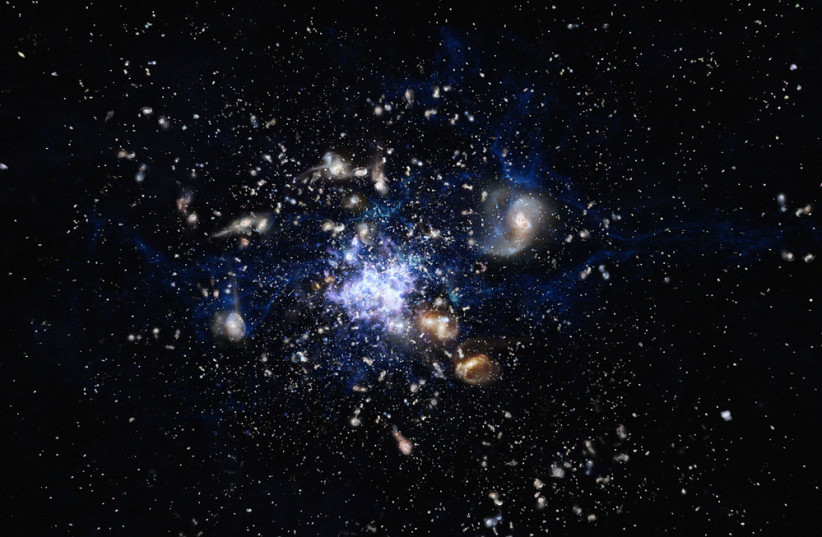Scientists have managed to witness a galaxy cluster's literal birth, using a powerful telescope to spot the faraway grouping galaxies form in some of the early years of the universe, according to a new study.
The study, which was published in the peer-reviewed academic journal Nature, was carried out by researchers from the European Southern Observatory (ESO) and using the Atacama Large Millimeter/submillimeter Array (ALMA), sheds light on the creation of some of the largest objects in the universe.
What are galaxy clusters?
The term "galaxy cluster" is somewhat self-explanatory: They are literal clusters of galaxies. These galaxies all reside relatively close to one another – but still, tens of thousands if not millions of light years away from one another.
Between each galaxy in the cluster is the presence of gas, known as the intracluster medium (ICM). This gas is very hot and very abundant – there's more gas than galaxy in a galaxy cluster.
But how did this gas get there? We know how it works and the overall functions of clusters themselves – many previous studies have focused on that over the years. But what about their literal formation? What about the very start of ICM presence in a cluster?

These questions are very hard to answer, and the main reason for this is that the only ICMs that had been previously studied are the ones in nearby galaxy clusters, which are all already fully formed. It hasn't exactly been easy to study the ICMs in still forming galaxy clusters because they're so far away.
We do, however, have some theories. Specifically, ICMs are thought to be formed by continuously gathering matter from their surroundings through a process known as accretion.
Still, without a look at an older and still-forming galaxy cluster – or in other words, a protocluster – it isn't possible to get a better understanding.
But the researchers behind this study may have found a way.
Enter the Spiderweb: Studying a still-forming galaxy cluster
The Spiderweb galaxy is one of the most heavily researched galaxies in the universe. It's especially massive, located some 10.6 billion light years away within the Hydra constellation, but it especially stands out for being an irregular galaxy. That is to say, it isn't "truly" a regular galaxy but is actually thought to be a protocluster. Basically, it is currently in the process of becoming a galaxy cluster – and we know this because we aren't actually studying the Spiderweb as it is today, but rather how it was around 10 billion years ago.
This is because it's so far away that the light from it only reaches us after 10 billion years.
In other words, factoring in the age of the universe, we are seeing the Spiderweb just three billion years after the Big Bang.
But there's a problem with the Spiderweb. Even though scientists think it's in the process of becoming a proper galaxy cluster, there hasn't been any presence of ICM ever detected.
But now, the researchers found it.
They did this by checking for the Sunyaev-Zeldovich (SZ) effect, which occurs when light from cosmic microwave background radiation leftover from the Big Bang passes through the gas, causing it to change slightly when the hot gas's electrons interact with it.
This appears as a shadowing effect of sorts and can be detected using the right instruments.
However, there aren't many facilities and tools with the right instruments to do so – aside from ALMA, that is. And they found out that yes, there is plenty of ICM – in fact, there is so much that it is likely well on its way to becoming a full-fledged galaxy cluster within 10 billion years. This means that we are, indeed witnessing the birth of a new galaxy cluster – it's just an incredibly long labor period.
And hopefully, we'll be able to see more of it soon enough. This is because ALMA and the ESO are working on a new groundbreaking research facility: The Extremely Large Telescope (ELT)
With this upcoming state-of-the-art facility and all its tools at our disposal, we may be able to look at the Spiderweb in greater detail than ever before.
